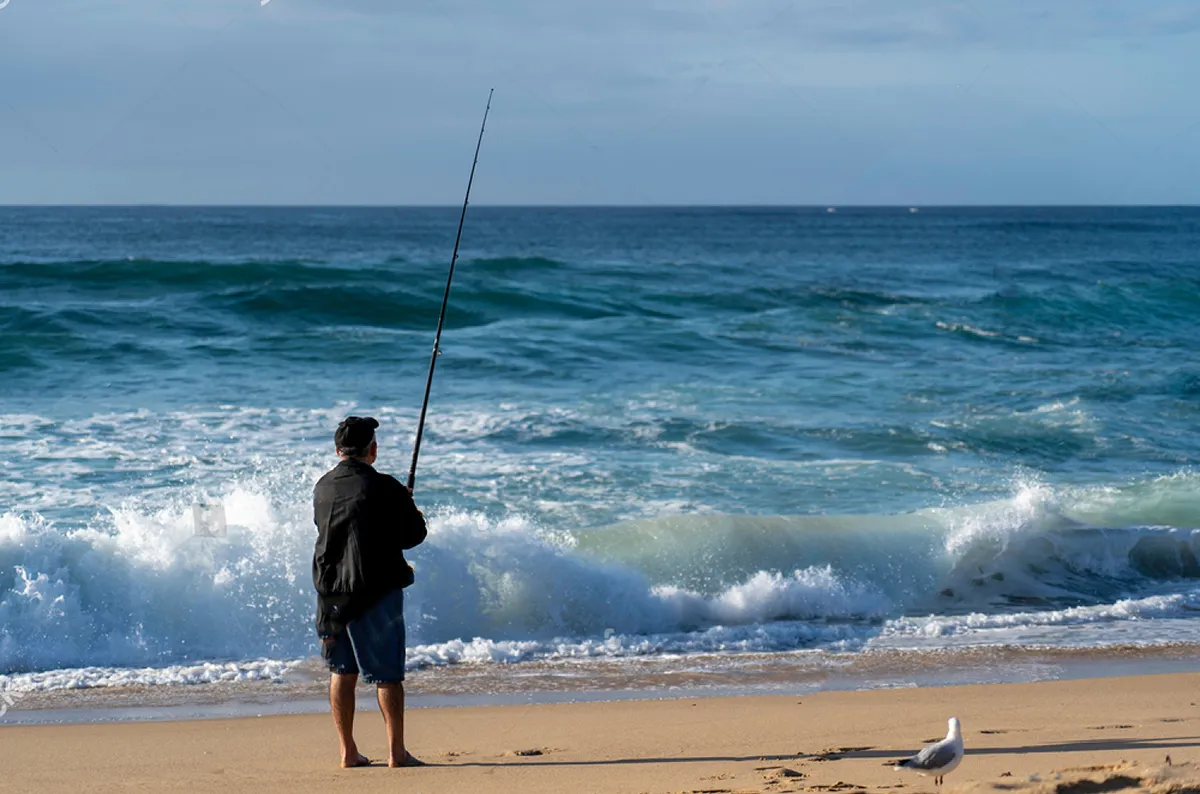If you’ve spent any time along our beautiful Aussie coastline, you’ve probably spotted a few keen fishos casting into the surf. Beach fishing is one of the best ways to unwind, and it’s a style of fishing that suits everyone—from total newbies to old hands. There’s nothing quite like that first strike while you’re standing in the sand, with the waves lapping at your feet.
The beauty of beach fishing is in its simplicity, mate. No need for a flash boat, just some basic fishing gear and an eye for the right spot. Whether you’re chasing bream, whiting, or flathead, it’s all about reading the conditions and having the right tackle. And let’s be honest, having good-quality gear can make or break your session. A solid rod, reel, and some tough-as-nails fishing line will make landing that fish a whole lot easier.
Speaking of gear, if you’re looking to step things up, have a squiz at our top-notch fishing lines over at ReelBoss. They’ll give you the edge next time you’re out in the surf.
Ready to hook into some more tips and tricks? Keep reading, mate!
Selecting the Right Beach Fishing Rod and Sized Reel
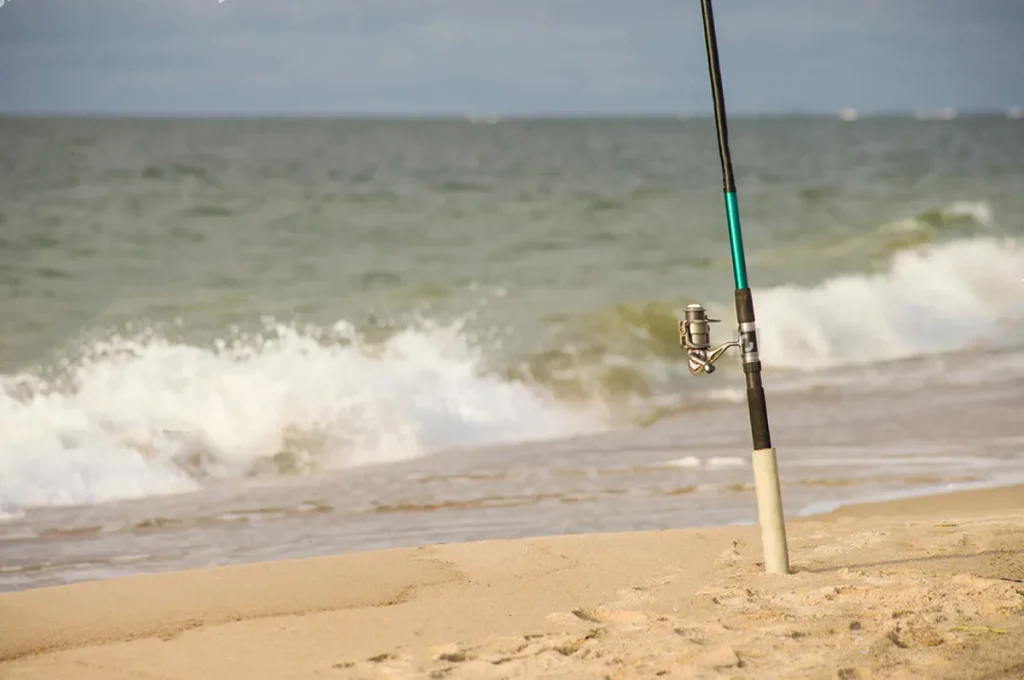
Choosing the right gear for beach fishing is half the battle, mate. You’ve got a few options when it comes to rods, and knowing the difference can really make a difference in your catch. A beach fishing pole is a longer, heavier rod that’s great for getting your bait out past the breakers, but if you’re after more versatility, a spin rod is the go-to. It’s lighter and easier to handle, which makes it perfect for targeting fish close to shore.
When it comes to pairing your rod with a sized reel, balance is key. You’ll want a reel that matches the power and length of your beach fishing rod. A heavier rod needs a bigger reel to handle those long casts, while a smaller setup is great for flicking lures in the shallows. Go too light on your reel, and you’ll struggle to control your casts in the surf. Too heavy, and you’ll be lugging around unnecessary weight.
Dial in the right combo, and you’ll find casting longer distances and fighting fish in the surf zone becomes a breeze. With the right gear in hand, you’re set to tackle any conditions the beach throws your way.
Best Time of Year and Conditions for Beach Fishing
When it comes to beach fishing, timing and weather are crucial, mate. The time of year can heavily influence your success, as different seasons bring different species into the surf. During the warmer months, species like whiting and bream are more active and often found close to shore, while cooler months are prime for targeting tailor and salmon in deeper waters. Water temperature, daylight hours, and fish migration patterns all come into play.
Weather conditions also play a massive role. Fish tend to be more active when there’s a bit of movement in the water, so a light breeze and moderate swell are perfect for stirring up bait and bringing the fish into the surf zone when beach fishing. Overcast days are also great for fishing because the reduced sunlight makes fish less wary, allowing them to feed more confidently in the shallows.
Keep an eye on the tides as well. High tide, especially during dawn or dusk, is ideal for fishing close to shore. Fish will follow the rising water, hunting for food in the shallower areas. Understanding these factors will help you pick the best conditions for your next beach fishing session.

Understanding Fish Species
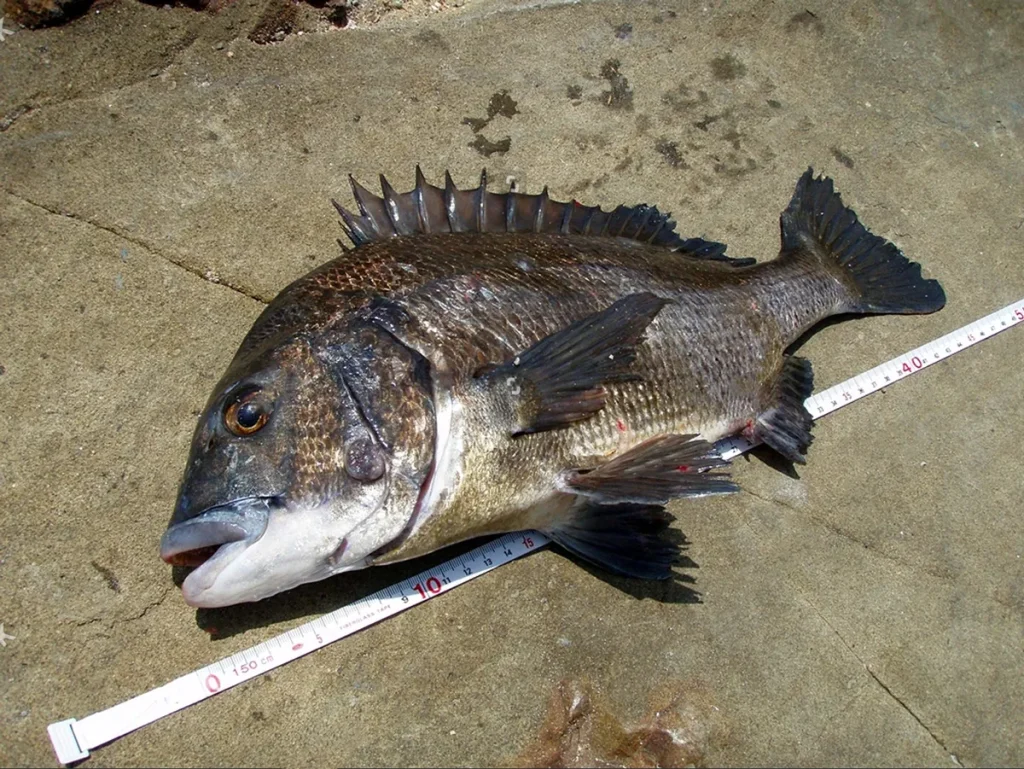
When you’re beach fishing, it’s all about knowing your targets. Here in Australia, the most sought-after fish are the bread and butter species like bream, whiting, dart, and flathead. These species are common along our coastlines and provide reliable action for anglers of all skill levels.
Bream are a year-round target, but they’re especially active in the warmer months. They like hanging around structure like rocks and sandbanks, so cast around these areas for the best chance. Whiting are another favourite, especially during summer. They’re often found in the shallows, so using a light rig with worms or prawns will do the trick.
Flathead are ambush predators that prefer sandy or muddy bottoms. They lie in wait for prey, so slowly working soft plastics or live bait along the bottom is your best bet. Lastly, dart are often found in the surf zone, chasing baitfish in the whitewash. They’re aggressive feeders, so don’t be afraid to cast into choppy water.
By knowing where and when to target these fish species, you’ll increase your chances of landing a good feed every time you hit the beach.
How to Read the Beach for Good Fish
One of the key skills in beach fishing is learning how to “read” the water to find the best spots. The beach may look like an endless stretch of sand, but if you know what to look for, you can pinpoint where the good fish are hiding. Start by focusing on sand banks and gutters. These are natural structures where fish often feed. Look for areas of white water, where waves break over sand banks—this is where smaller fish and bait gather, which attracts larger predators.
Pay attention to changes in depth. Shallow water is perfect for species like whiting, while deeper water in the gutters between sandbanks often holds flathead and bream. The trick is to cast near these depth transitions, as fish move between them looking for food.
Reading the waves is another critical element. Fish love areas with a bit of turbulence, as it stirs up food. So, keep an eye on sections where the waves create white foam—this is where fish are likely to be actively feeding. Mastering the art of reading the beach can make all the difference in turning a quiet day into a productive one.
Using Bait Fish and Lures Like a Pro
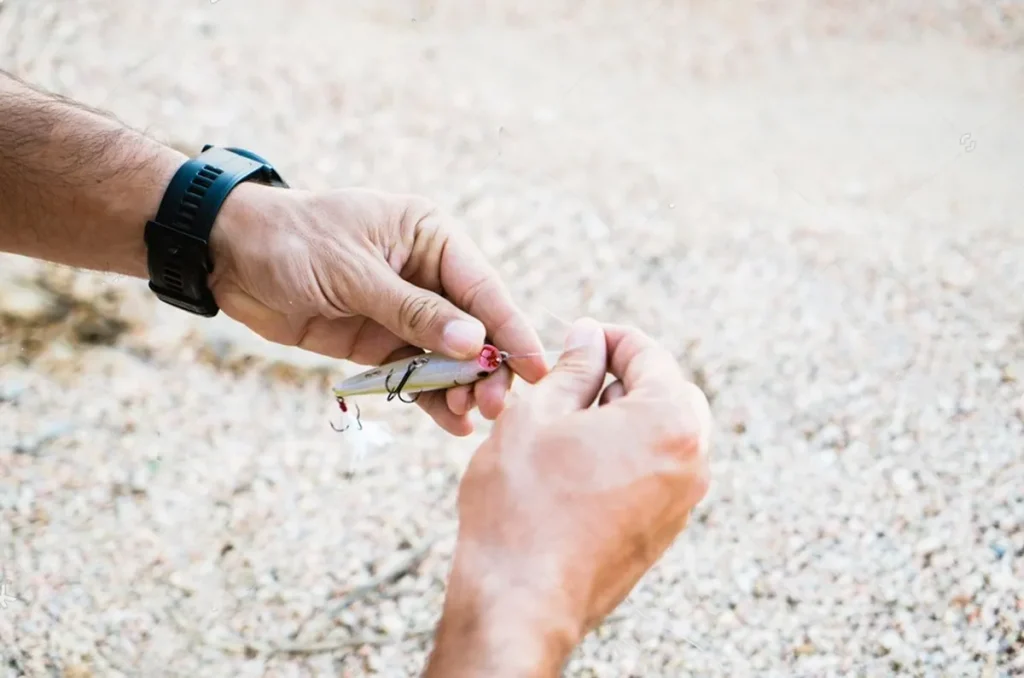
Choosing between live bait fish and soft plastics can depend on the day and conditions, mate. Both have their strengths, and knowing when to use each will put you ahead of the game. Live bait fish are perfect when you’re targeting species like bream or flathead, especially in shallow water or around sand banks. Keep your bait fresh in a bait bucket to ensure it stays lively and appealing to your target fish.
On the other hand, soft plastics can be a game-changer, especially when fish are a bit more scattered or less aggressive. These lures mimic the movement of injured bait and can be fished at different depths, from shallow water to deeper water. Soft plastics are especially handy when fishing in the surf zone, as they can withstand the rougher conditions and still maintain their natural movement.
In choppy water or areas with a lot of white water, live bait might struggle, while soft plastics tend to stand out more. The right bait or lure choice, along with the perfect cast, can make all the difference in landing a solid catch.
Mastering Techniques for Surf Fishing
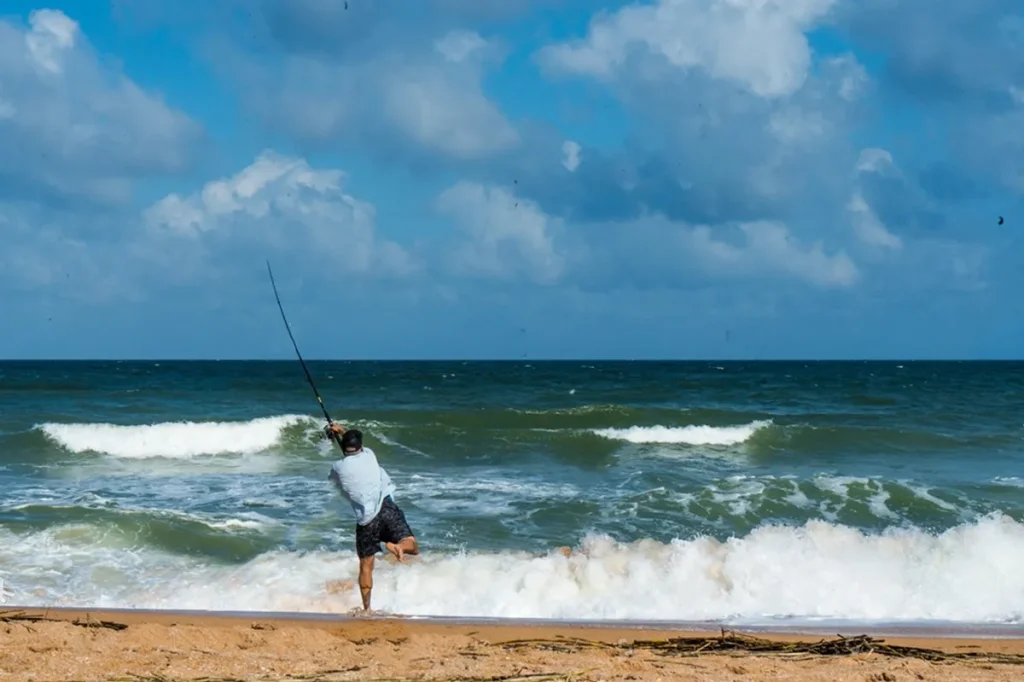
When it comes to surf fishing, it’s all about technique, mate. Casting into the surf zone requires a bit more finesse compared to other types of fishing. The goal is to get your bait or lure just beyond the breaking waves, where fish are feeding on stirred-up bait. A longer beach fishing rod paired with the right sized reel will help you reach those sweet spots.
Start by positioning yourself at the edge of the water, keeping an eye on the waves. Time your cast between sets, aiming for the calmer water just before the next wave breaks. This will give you the best chance to drop your bait without it being swept away too quickly. Whether you’re fishing close to shore in the shallow water or targeting species in deeper water, adjusting your casting distance and depth is key.
Work your bait at different levels, as species like whiting hang in the shallows, while flathead and dart tend to sit deeper. Reel in slowly, letting your bait or lure move naturally with the current. Mastering these techniques will significantly improve your chances of landing some good fish next time you’re in the surf!
Conclusion: Essential Beach Fishing Tips for Success
Beach fishing is all about timing, gear, and reading the conditions, mate. From selecting the right beach fishing rod and sized reel to mastering casting into the surf zone, each step adds up to a more successful day on the water. Don’t forget to keep an eye on the tides and learn the art of reading the beach—identifying key areas like sand banks, white water, and those deeper gutters will always improve your chances.
Whether you’re fishing with live bait fish from your bait bucket or working those trusty soft plastics, adapting to the conditions and switching up your approach can make all the difference. Remember, the fish are always moving between shallow water and deeper water, so you need to adjust your technique to match.
Before your next trip, make sure you’ve got your gear dialed in. If you’re looking to upgrade, check out the top-notch fishing lines at ReelBoss. A quality line can be the difference between a near-miss and landing that dream catch. With the right know-how and gear, you’ll be on your way to landing the best catches the beach has to offer. Tight lines, mate!
